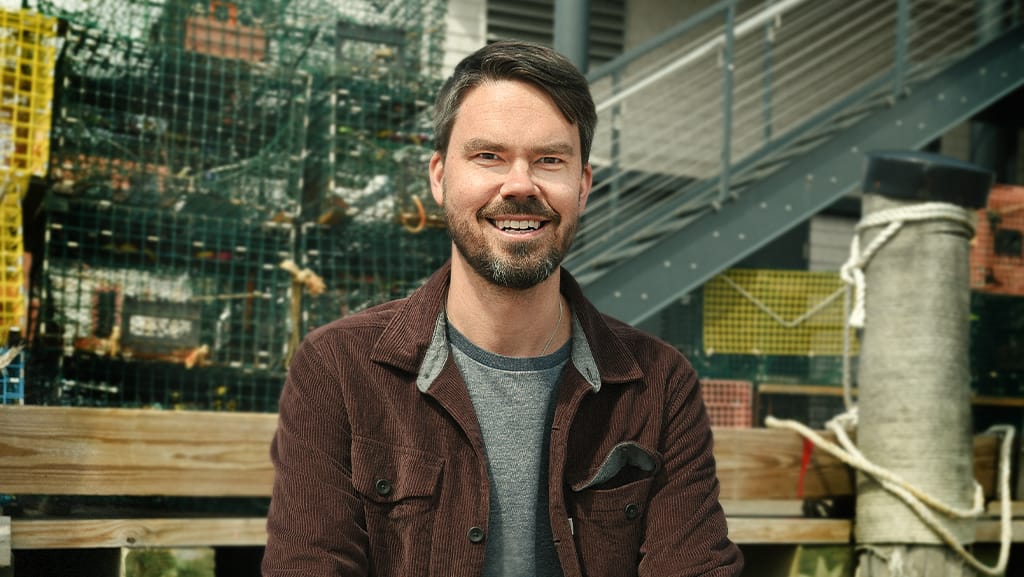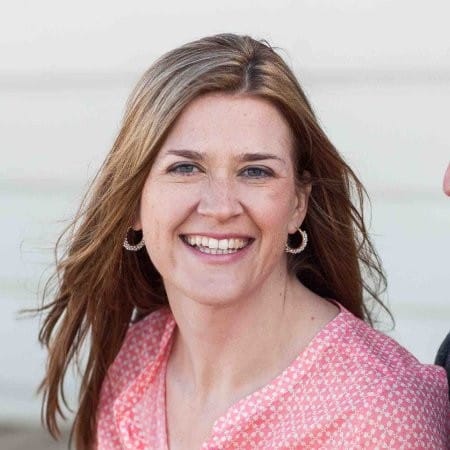It started with a Craigslist ad.
The year was 2009. Ben Conniff was 24 years old, living in New York City, scrolling through job listings during the depths of the recession. A former food writer who'd realized he "liked being hands-on, making things more than writing about them," Ben was hunting for any restaurant job he could find.
Join Bora Celik as he chats with Ben Conniff, Co-Founder and Chief Innovation Officer at Luke's Lobster.
Watch/Listen: YouTube | Apple Podcasts | Spotify | RSS Feed
Then he saw it—a post from a fellow twenty-something working an investment banking job. This banker, Luke Holden, had grown up in Maine's lobster industry and had a vision: bring his family's premium lobster directly to New Yorkers in a casual shack setting, serving superior rolls at a reasonable price.
"We met, we hit it off, we decided to go a million miles an hour to get it open," Ben recalls. "Just about six weeks after we met, we had signed a lease and built out a tiny little 250 square foot space in the East Village. And we were slinging lobster rolls."
Those early days were a blur of activity. While Luke maintained his banking job, Ben transformed himself into a one-man restaurant launching machine—figuring out licensing requirements via Google, coordinating the minimal contractors they could afford, and recruiting staff through Craigslist.
"We didn't sleep for that first month," Ben says. "Luke had his day job, so he was off at the office 10 hours a day. He would come by nights and weekends to help."
The buildout became a family affair. Luke's uncle handled carpentry for the tables. His brother drove up from DC on weekends to help with painting. A friend of the brother painted their mural. It was grassroots entrepreneurship at its finest.
The pressure was on. "It was September and we all kind of agreed that folks think most about lobster rolls in the warmer months. So if we didn't get the restaurant open in October, we were going to be off into winter time and that would be a much harder time to launch this business. And we definitely didn't have enough cash to last through until the following spring."
The Perfect Storm of Success
No one could have predicted what happened next. The tiny lobster shack was an instant hit. Just seven months after opening their first location, they launched a second spot on the Upper East Side. Five months after that came a third.
What made Luke's Lobster such an immediate success? Ben attributes more than 50% to Luke's deep Maine connections and multi-generational knowledge of the lobster industry.
"That allowed us to get the quality of product that we needed at the price that we needed to make this an approachably priced lobster roll for people," Ben explains. "But also, that gave me the story that I needed to do that press outreach."
It was a story that practically sold itself: a third-generation lobsterman working on Wall Street, yearning to bring his family's exceptional seafood to the city, partnering with a food writer to create something authentic and special.
"All I needed to do was email the right people," Ben says.
The second crucial ingredient was their approach to team management. Despite neither founder having restaurant experience, they embraced this as an advantage. They created a flat organization where frontline staff had genuine input.
"We were very lucky to just find some extraordinary individuals who joined us on that very first day," Ben remembers. "And I think because Luke and I were not restaurant industry professionals, the way we approached our relationship with our team was 'you all know as much or more about what's going to happen in this business than we do.'"
This philosophy created an infectious energy that customers could feel. "When that team's engaged, they enjoy being there, they enjoy being with one another, they love the job, and that's infectious to the guests. The guests come in and they see a team that loves being there, that's passionate, and that's having a good time."
Location played a role too. Their first East Village spot sat on a block that was "on fire" with specialized food outlets—the best arepas, pork bun sandwiches, and cupcakes in the city, all within steps of each other. The concentration of culinary excellence drew food media and enthusiasts alike.
The Secret in the Shell
At the heart of Luke's Lobster's identity is, well, the lobster. When asked what makes Maine lobster special, Ben doesn't hesitate: "It definitely is the best tasting lobster in the world, for sure."
He explains that the cold, clean waters of the Gulf of Maine create the perfect environment. "Cold, obviously, just a function of the temperature of the Gulf of Maine... The other aspect of it is the cleanliness of the water. And that comes back to what happens on land. Everything is connected."
Maine's approach to agriculture and pollution regulation keeps harmful runoff from reaching the ocean. This pristine ecosystem produces lobster with a distinctive taste profile.
Maine's harvest timing also matters. "In Maine, the most lobstering happens after the lobsters have shed their shells. So we call that new shell lobster." These recently molted lobsters have meat that's "more tender and sweet" compared to their hard-shell counterparts, whose meat is "much firmer, meatier, and [has] a totally different taste and texture."
Simplicity on a Bun
With exceptional raw materials, Luke's Lobster's philosophy is simple: let the star shine.
"Our signature roll is all about simplicity and the reason for that is that the lobster meat is so delicious," Ben says. Unlike restaurants that use mayonnaise and fillers to mask subpar meat, Luke's takes the opposite approach.
"We actually take the absolute best lobster meat that you can get. And we don't want to cover that up with a bunch of sauce or a bunch of other stuff."
Their formula—essentially unchanged since 2009—features cold lobster meat in a warm toasted bun with a tiny bit of mayo inside, a little lemon butter on top, and a proprietary seasoning blend designed to accentuate the lobster's natural sweetness.
While they occasionally experiment with limited time offerings like a Mala Mayo Roll or a Mike's Hot Honey collaboration, the traditional roll remains their bestseller by far.
From Dock to Plate
What truly sets Luke's apart is their vertically integrated supply chain—a rarity in the restaurant industry.
"Typical seafood restaurant, when they need more seafood, they call up a broad line distributor that got that seafood from a wholesaler that got it from a broker that got it from a processor that got the live in from a broker," Ben explains. "It's such a long and often broken supply chain."
By contrast, Luke's maintains direct relationships with fishermen, operates their own processing facilities, and controls the product's journey from ocean to plate. This approach ensures quality, traceability, and fairer pricing for both fishermen and customers.
"We can work with the fishermen on things like best handling techniques to reduce the bruising, to reduce the shrink that happens if you handle the lobster too rough. And we can make sure that we're rewarding those fishermen for handling well."
This approach comes with challenges. The wild-caught nature of lobster means supply can fluctuate based on weather, and prices swing dramatically throughout the year. Unlike many restaurants that simply list "Market Price" on menus, Luke's commits to transparent pricing even when it squeezes their margins.
"We try to hold price where it is before going up as long as we can. And that means there are some times that we make bigger profit and there are sometimes that we make lower profits and we try to hang on for stability's sake."
They even do something unusual—they lower prices when costs decrease. "Restaurant industry wisdom is once you've gone up on price, you never go down. And that's not our attitude at all. We just want to make sure that folks have access to lobster at the best price they can get it."
More Than a Meal
Today, Luke's Lobster has expanded far beyond that first tiny East Village shack. They've opened locations across America, launched in Japan, and developed a grocery store product line featuring everything from frozen lobster mac and cheese to lobster tails.
But at its core, the company remains committed to the values that launched it—quality seafood, fair treatment of people throughout the supply chain, and environmental stewardship. They've become a certified B Corp, joining companies like Patagonia and Ben & Jerry's in committing to verified social and environmental performance standards.
"I think just as much people want to buy a story and they want to buy a connection to where their food comes from and to the people that were involved along the way," Ben reflects.
In a world where we've "gotten so far removed from where our food comes from," Luke's offers something increasingly valuable—transparency, authenticity, and a direct connection to the source.
"It's the knowledge of the people, the place, the environment and the ingredients that are necessary in your supply chain to get the perfect lobster roll on the plate, and then the commitment to doing right by all of them," Ben says.
That, perhaps even more than the perfect blend of sweet lobster meat and warm buttered bun, is what keeps customers coming back for more.
Help build the opportunity economy for creators and brands. Request your invite at collabs.io



